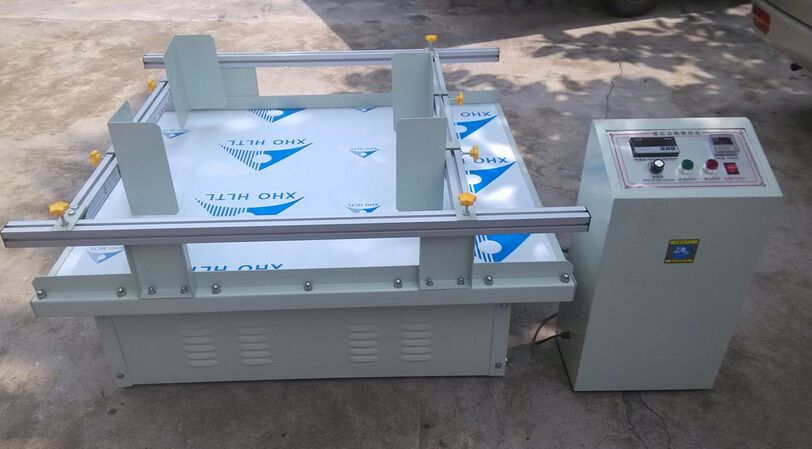ISO 13355-16 Final Vibration Test for Transport Durability
The ISO 13355 series of standards provides a comprehensive framework for testing the durability and integrity of packaging materials under conditions that simulate real-world transport environments. The final vibration test, specifically defined in ISO 13355-16, is designed to evaluate how well packaging withstands severe mechanical stress during transportation by road or rail.
This service ensures compliance with international standards while offering critical insights into the performance of your packaging under dynamic loads. By simulating actual transport conditions, we can identify potential weaknesses before products reach their final destination. This testing helps manufacturers enhance product protection and reduce damage rates at various stages of distribution.
Our expertise in this area allows us to offer a range of services tailored to meet the specific needs of our clients. From initial consultation through detailed analysis, our team works closely with you to ensure every aspect of your packaging meets required specifications. Whether it's for consumer goods or industrial components, we provide thorough testing that supports both current and future regulatory requirements.
One key advantage of this service is its ability to pinpoint exactly where improvements are needed within the packaging design. By identifying areas prone to failure early on in the development process, you can make necessary adjustments before full-scale production begins. This not only saves time but also reduces costs associated with rework or recalls.
Another benefit lies in the enhanced confidence provided by knowing that your product will arrive safely at its destination regardless of how it was transported. With increasing global trade and stricter environmental regulations, ensuring robust packaging becomes even more crucial. Our testing helps demonstrate compliance while adding value to your brand reputation.
In summary, the ISO 13355-16 final vibration test offers a reliable method for assessing packaging performance under simulated transport conditions. It plays an essential role in safeguarding cargo integrity throughout its journey from manufacturer to consumer. By investing in this type of testing early on, you can protect your brand and ensure satisfaction among end users.
Scope and Methodology
| Test Parameters | Description |
|---|---|
| Vibration Frequency Range | The test simulates frequencies typical of road or rail transport, usually between 10 Hz to 500 Hz. |
| Vibration Amplitude Levels | Amplitudes are set according to the type and weight class of the packaging being tested. For example, lighter packages may experience higher amplitudes compared to heavier ones. |
| Durability Time Duration | This varies depending on the specific application but often ranges from several hours up to 72 hours. |
| Environmental Conditions | The test includes temperature variations and humidity levels that mimic actual transport conditions. |
| Specimen Preparation | Packages are prepared according to customer specifications, including any required protective coatings or inserts. |
| Instrumentation | High-end shakers equipped with accelerometers and displacement sensors are used for accurate measurement of vibration parameters. |
| Data Collection & Analysis | Continuous data collection ensures precise evaluation of package performance during the test cycle. |
The final vibration test follows a structured protocol outlined in ISO 13355-16, which mandates detailed procedures for specimen preparation, test setup, execution, and analysis. Compliance with these standards guarantees accurate results that can be relied upon when making decisions about packaging design improvements.
Our laboratory adheres strictly to the guidelines set forth by ISO 13355-16, ensuring consistency and reliability in our testing process. This approach allows us to provide accurate assessments of how well your packaging will perform under extreme transport conditions.
Benefits
The benefits of conducting the final vibration test on your packaging extend beyond mere compliance with international standards; they offer tangible advantages that contribute significantly to overall business success. Here are some key points:
- Improved Product Protection: Identifying potential failures early enables you to implement necessary changes before costly issues arise.
- Better Compliance Assurance: Ensures adherence to relevant regulations, reducing the risk of penalties or recalls.
- Enhanced Brand Reputation: Delivering undamaged products enhances customer satisfaction and loyalty.
- Cost Savings: Early detection of flaws minimizes waste, reduces repair costs, and prevents rework.
- Informed Design Decisions: Detailed test results guide engineers in making informed choices about material selection and structural modifications.
- Increased Market Confidence: Demonstrating robust packaging helps build trust with both consumers and business partners.
- Predictive Performance Insights: Understanding how your package behaves under stress allows for proactive measures to be taken.
In conclusion, investing in the final vibration test offers numerous benefits that go far beyond simple compliance. It provides valuable insights into product performance under challenging conditions, which ultimately contributes to better business outcomes.
Quality and Reliability Assurance
At our laboratory, quality assurance is at the core of everything we do. When it comes to vibration testing, maintaining strict adherence to ISO 13355-16 ensures that each test conducted meets the highest standards of accuracy and reliability.
The process begins with meticulous specimen preparation tailored specifically for your product type and size. Our skilled technicians use advanced tools and techniques to ensure every package is properly set up before testing commences. This attention to detail guarantees consistent results across multiple trials, providing you with reliable data upon which to base important decisions.
During the test itself, our high-precision equipment measures key parameters such as frequency, amplitude, duration, and environmental conditions accurately. Real-time monitoring ensures that no deviation occurs from the prescribed protocol. Post-test analysis involves comprehensive review of all collected data points, allowing for precise identification of any areas requiring improvement.
Our commitment to quality doesn't end there; we also offer follow-up services like retesting if initial results indicate issues with packaging design or construction. This ensures continuous optimization of your product's protective capabilities until they meet all specified criteria.
By choosing our laboratory for your vibration testing needs, you can rest assured knowing that every aspect of the process adheres to international standards and best practices. Our experienced team brings decades of combined knowledge and expertise into play, ensuring top-notch results each time.





